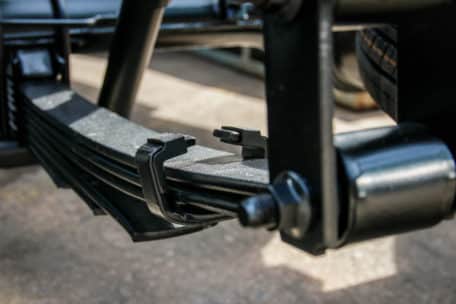Flat Materials for Engineering and Architectural Design: What are They?

When designing anything—from the smallest product to a massive building—it’s important to think about what materials you want to use. These will determine how your design looks and feels, as well as the cost and ease of construction. Engineers and architects need to consider many factors when choosing the right materials for their projects. Each material has its own properties, limitations, availability, costs, and more. Understanding these factors is crucial when making decisions about which materials are right for your project. There are many different types of flat materials that have distinct uses in engineering and architecture.
Rigorous QA happens across all Boynes Springs Products
Boynes Springs has access to an extensive range of exotic alloys meaning we can manufacture fit-for-purpose products to exact specifications for any project. Our Range 3 Metals are extremely durable and are the perfect solution for heavy-duty use. All of our flat materials and spring products go through a rigorous QA process, that adheres to to our ISO 9001:2000 certification.
What Are Flat Materials?
Any material that is flat in shape will fall under the category of flat materials. This includes any 2-dimensional objects. It could also include 3-dimensional objects that are extremely thin (like paper). When it comes to engineering, materials like paper and fabric typically fall under the category of “non-flat” materials. This means that they have certain properties that make them more appropriate for certain applications. Essentially, the term “flat” is used in a relative sense. It’s meant to indicate the difference between materials that are thick versus those that are thin.
Leaf springs and uses
A leaf spring is a type of flat material that is used as a type of suspension in automobiles. It’s a thin, flat piece of metal that gets bent and shaped into different configurations in order to support the engine, suspension, exhaust, and other parts. When you apply pressure to one side of the leaf spring, it bends outwards and pulls the other end towards it. The shape of the V allows it to distribute the pressure across the surface of the entire spring. This makes it ideal for supporting parts of the vehicle.
Clock springs and uses
A clock spring is a specific type of leaf spring that is used in mechanical clocks. The clock spring is positioned vertically above the movement, and it supports the weight of the hands. These clock springs are made from a thin strip of metal (often copper or iron) that is shaped like a spiral. The spiral is attached at the top end via a pivot point. When the clock is “wound up,” the spring winds up like a tightly wound spring. The pressure and force of the wind-up is distributed along the length of the spiral, making it much thinner than an ordinary spring. This is key since the spring has to fit inside the clock movement. They might also be used in clocks that are powered by electricity.
Flat Material Experts at Boynes Springs
Flat materials are used in engineering and architectural design for many different purposes. These materials are particularly useful when you want to create a design with minimal visual impact. Boynes Springs works with businesses across a range of industries to create springs for very specific applications. Get in contact with us today to see how we can work together to bring your project to completion.

